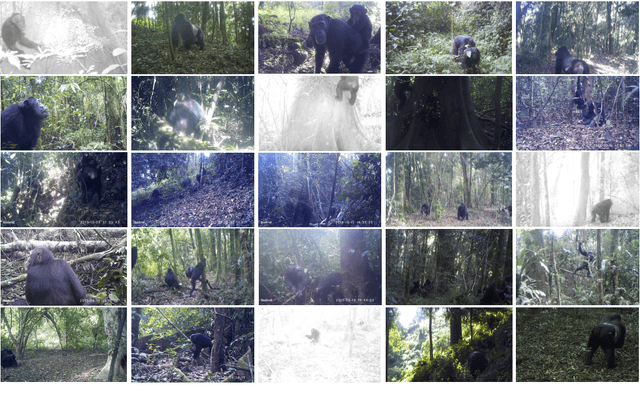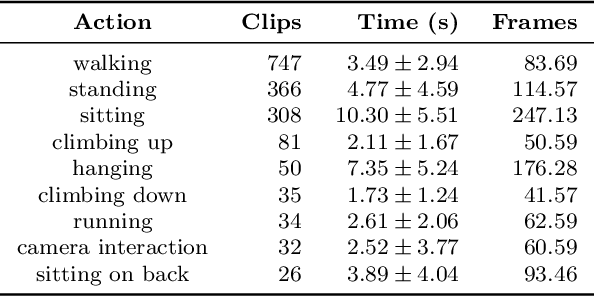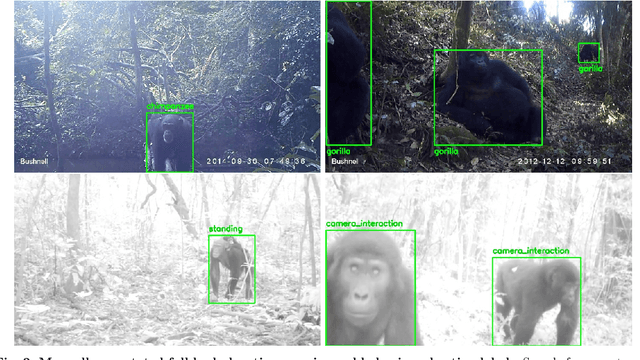Hjalmar Kuhl
ChimpVLM: Ethogram-Enhanced Chimpanzee Behaviour Recognition
Apr 13, 2024Abstract:We show that chimpanzee behaviour understanding from camera traps can be enhanced by providing visual architectures with access to an embedding of text descriptions that detail species behaviours. In particular, we present a vision-language model which employs multi-modal decoding of visual features extracted directly from camera trap videos to process query tokens representing behaviours and output class predictions. Query tokens are initialised using a standardised ethogram of chimpanzee behaviour, rather than using random or name-based initialisations. In addition, the effect of initialising query tokens using a masked language model fine-tuned on a text corpus of known behavioural patterns is explored. We evaluate our system on the PanAf500 and PanAf20K datasets and demonstrate the performance benefits of our multi-modal decoding approach and query initialisation strategy on multi-class and multi-label recognition tasks, respectively. Results and ablations corroborate performance improvements. We achieve state-of-the-art performance over vision and vision-language models in top-1 accuracy (+6.34%) on PanAf500 and overall (+1.1%) and tail-class (+2.26%) mean average precision on PanAf20K. We share complete source code and network weights for full reproducibility of results and easy utilisation.
PanAf20K: A Large Video Dataset for Wild Ape Detection and Behaviour Recognition
Jan 31, 2024



Abstract:We present the PanAf20K dataset, the largest and most diverse open-access annotated video dataset of great apes in their natural environment. It comprises more than 7 million frames across ~20,000 camera trap videos of chimpanzees and gorillas collected at 14 field sites in tropical Africa as part of the Pan African Programme: The Cultured Chimpanzee. The footage is accompanied by a rich set of annotations and benchmarks making it suitable for training and testing a variety of challenging and ecologically important computer vision tasks including ape detection and behaviour recognition. Furthering AI analysis of camera trap information is critical given the International Union for Conservation of Nature now lists all species in the great ape family as either Endangered or Critically Endangered. We hope the dataset can form a solid basis for engagement of the AI community to improve performance, efficiency, and result interpretation in order to support assessments of great ape presence, abundance, distribution, and behaviour and thereby aid conservation efforts.
 Add to Chrome
Add to Chrome Add to Firefox
Add to Firefox Add to Edge
Add to Edge